The Faery Queen has always been this powerful, otherworldly beauty cloaked in mystery and whispers. Not a lot can be found in folklore about her, but what is obvious is that she goes by many names and can be found across the globe.
The Faery Queen in Folklore
The Forest in Folklore and Mythology by Alexander Porteous [1928]
Oberon was the king of the Fairies, and he and his queen Titania are important figures in the Fairy lore of the Middle Ages. Sometimes the Fairies of popular belief may be traced as being descended from some traditionally remembered personage who may or may not have had a real tangible existence. Thus Queen Mab is said to have been originally the queen of a certain early Irish race, her name being Medhb; while Oberon has been traced to a dwarf named Albe-rich, who was the Court Jester of Dietrich of Bern.
The foretelling of future events, or discovery of something concealed, by means of a rod or wand, or sometimes from the fruit of a tree, has been for long practised among many races, and even yet, experts in this art claim to be able to discover the whereabouts of water or the presence of precious metals by means of the Diving Rod. In all mythologies wands or rods had obviously a magic power, and were used to drive away the powers of darkness, serpents, and other evils, as well as to discover hidden treasures. In fairy tales we find the wand mentioned, and the Fairy Queen is invariably shown bearing her wand and with it performing her marvels.
The Element Encyclopedia of Fairies by Lucy Cooper
Aibell (also Aoibheall or Aeval).
The Irish fairy queen of north Munster, County Clare, part of the Tuatha de Danann, and guardian spirit of the O’Brien clan. Her name probably derives from the Gaelic aoibh, meaning “beauty”, or the proto-Celtic Oibel-a, literally meaning “burning fire”. She appears in many works of Irish literature, including the eighteenth-century comic poem Cúirt an Mheáin Oíche, or “Midnight Court” by Brian Merriman.
Ana
Queen of the Fairies in Romany gypsy folklore.
E Bukura e Dheut
The Albanian Queen of the Fairies. She dwells in a fairytale castle on top of a mountain guarded by fabulous creatures, including a three-headed dog. The epitome of beauty and happiness, she is sometimes invoked as the ideal woman. She rules over a host of beautiful, capricious, unpredictable spirits, who can be kind and generous or malevolent and destructive.
Fand
In Celtic mythology, a Sidhe fairy queen and sea goddess, married to Manannan mac Lir, a Manx sea god. A shapeshifter taking the form of a seabird and of exceptional beauty.
Joan the Wad
Queen of the Cornish piskies.
Mab
A name for the fairy queen in English folklore, especially popular in sixteenth and seventeenth-century literature. She famously appears in Shakespeare’s Romeo and Juliet as the fairy midwife, delivering men of their desires in the form of dreams.
Oona (also Oonagh).
Queen of the Daoine Sidh in Irish folklore… dressed in silver robes, glittering as if covered in diamonds, with golden hair so long that it swept the ground.
Titania
When William Shakespeare wrote A Midsummer Night’s Dream and called his Queen of the Fairies Titania, the name entered the language. It has since been popularized in fiction, art, games and films.
The full descriptions of each of these Faery Queens can be read in the book.
Encyclopedia of Fairies in World Folklore and Mythology by Theresa Bane

You can read more about various Faery Queens in the book.
Wonder Tales from Scottish Myth and Legend by Donald Alexander Mackenzie [1917]
Story of Thomas the Rhymer
At the beginning of each summer, when the milk-white hawthorn is in bloom, anointing the air with its sweet odour, and miles and miles of golden whin adorn the glens and hill-slopes, the fairies come forth in grand procession, headed by the Fairy Queen. They are mounted on little white horses, and when on a night of clear soft moonlight the people hear the clatter of many hoofs, the jingling of bridles, and the sound of laughter and sweet music coming sweetly down the wind, they whisper one to another: “’Tis the Fairy Folks’ Raid”, or “Here come the Riders of the Shee”.
The Fairy Queen, who rides in front, is gowned in grass-green silk, and wears over her shoulders a mantle of green velvet adorned with silver spangles. She is of great beauty. Her eyes are like wood violets, her teeth like pearls, her brow and neck are swan-white, and her cheeks bloom like ripe apples. Her long clustering hair of rich auburn gold which falls over her shoulders and down her back, is bound round about with a snood that glints with star-like gems, and there is one great flashing jewel above her brow. On each lock of her horse’s mane hang sweet-toned silver bells that tinkle merrily as she rides on.
The riders who follow her in couples are likewise clad in green, and wear little red caps bright as the flaming poppies in waving fields of yellow barley. Their horses’ manes are hung with silver whistles upon which the soft winds play. Some fairies twang harps of gold, some make sweet music on oaten pipes, and some sing with birdlike voices in the moonlight. When song and music cease, they chat and laugh merrily as they ride on their way. Over hills and down glens they go, but no hoof-mark is left by their horses. So lightly do the little white creatures trot that not a grass blade is broken by their tread, nor is the honey-dew spilled from blue harebells and yellow buttercups. Sometimes the fairies ride over tree-tops or through the air on eddies of western wind. The Riders of the Shee always come from the west.
When the Summer Fairy Raid is coming, the people hang branches of rowan over their doors and round their rooms, and when the Winter Raid is coming they hang up holly and mistletoe as protection from attack; for sometimes the fairies steal pretty children while they lie fast asleep, and carry them off to Fairyland, and sometimes they lure away pipers and bards, and women who have sweet singing voices.
Once there was a great bard who was called Thomas the Rhymer. He lived at Ercildoune (Earlston), in Berwickshire, during the thirteenth century. It is told that he vanished for seven years, and that when he reappeared he had the gift of prophecy. Because he was able to foretell events, he was given the name of True Thomas.
All through Scotland, from the Cheviot Hills to the Pentland Firth, the story of Thomas the Rhymer has long been known.
During his seven years’ absence from home be is said to have dwelt in fairyland. One evening, so runs the tale, he was walking alone on the banks of Leader Water when he saw riding towards him the Fairy Queen on her milk-white steed, the silver bells tinkling on its mane, and the silver bridle jingling sweet and clear. He was amazed at her beauty, and thinking she was the Queen of Heaven, bared his head and knelt before her as she dismounted, saying: “All hail, mighty Queen of Heaven! I have never before seen your equal.”
Said the green-clad lady: “Ah! Thomas, you have named me wrongly. I am the Queen of Fairyland, and have come to visit you.”
“What seek you with me?” Thomas asked.
Said the Fairy Queen: “You must hasten at once to Fairyland, and serve me there for seven years.”
Then she laid a spell upon him, and he had to obey her will. She mounted her milk-white steed and Thomas mounted behind her, and they rode off together. They crossed the Leader Water, and the horse went swifter than the wind over hill and dale until a great wide desert was reached. No house nor human being could be seen anywhere. East and west, north and south, the level desert stretched as far as eye could see. They rode on and on until at length the Fairy Queen spoke, and said: “Dismount, O Thomas, and I shall show you three wonders.”
Thomas dismounted and the Fairy Queen dismounted also. Said she: “Look, yonder is a narrow road full of thorns and briers. That is the path to Heaven. Yonder is a broad highway which runs across a lily lea. That is the path of wickedness. Yonder is another road. It twines round the hill-side towards the west. That is the way to Fairyland, and you and I must ride thither.”
Again she mounted her milk-white steed and Thomas mounted behind. They rode on and on, crossing many rivers. Nor sun or moon could be seen nor any stars, and in the silence and thick darkness they heard the deep voice of the roaring sea.
At length a light appeared in front of them, which grew larger and brighter as they rode on. Then Thomas saw a beautiful country. The horse halted and he found himself in the midst of a green garden. When they had dismounted, the Fairy Queen plucked an apple and gave it to, Thomas, saying: “This is your reward for coming with me. After you have eaten of it you will have power to speak truly of coming events, and men will know you as ‘True Thomas’.”
Thomas ate the apple and then followed the queen to her palace. He was given clothing of green silk and shoes of green velvet, and he dwelt among the fairies for seven years. The time passed so quickly that the seven years seemed no longer than seven hours.
After his return to Ercildoune, where he lived in a castle, Thomas made many songs and ballads and pronounced in rhyme many prophecies. He travelled up and down the country, and wherever he went he foretold events, some of which took place while yet he lived among men, but others did not happen until long years afterwards. There are still some prophecies which are as yet unfulfilled.
It is said that when Thomas was an old man the Fairy Queen returned for him. One day, as he stood chatting with knights and ladies, she rode from the river-side and called: “True Thomas, your time has come.”
Thomas cried to his friends: “Farewell, all of you, I shall return no more.” Then he mounted the milk-white steed behind the Fairy Queen, and galloped across the ford. Several knights leapt into their saddles and followed the Rider of the Shee, but when they reached the opposite bank of the river they could see naught of Thomas and the Fairy Queen.
It is said that Thomas still dwells in Fairyland, and that he goes about among the Riders of the Shee when they come forth at the beginning of each summer. Those who have seen him ride past tell that he looks very old, and that his hair and long beard are white as driven snow. At other times he goes about invisible, except when he attends a market to buy horses for a fairy army which is to take part in a great battle. He drives the horses to Fairyland and keeps them there. When he has collected a sufficient number, it is told, he will return again to wage war against the invaders of his country, whom he will defeat on the banks of the Clyde.
Thomas wanders far and wide through Scotland. He has been seen, folks have told, riding out of a fairy dwelling below Eildon Hills, from another fairy dwelling below Dumbuck Hill, near Dumbarton, and from a third fairy dwelling below the boat-shaped mound of Tom-na-hurich at Inverness.
Once a man who climbed Dumbuck Hill came to an open door and entered through it. In a dim chamber he saw a little old man resting on his elbow, who spoke to him and said: “Has the time come?”
The man was stricken with fear and fled away. When he pressed through the doorway, the door shut behind him, and turf closed over it.
Another story about Thomas is told at Inverness. Two fiddlers, named Farquhar Grant and Thomas Cumming, natives of Strathspey, who lived over three hundred years ago, once visited Inverness during the Christmas season. They hoped to earn money by their music, and as soon as they arrived in the town began to show their skill in the streets. Although they had great fame as fiddlers in Strathspey, they found that the townspeople took little notice of them. When night fell, they had not collected enough money to buy food for supper and to pay for a night’s lodging. They stopped playing and went, with their fiddles under their right arms, towards the wooden bridge that then crossed the River Ness.
Just as they were about to walk over the bridge they saw a little old man coming towards them in the dusk. His beard was very long and very white, but although his back was bent his step was easy and light. He stopped in front of the fiddlers, and, much to their surprise, hailed them by their names saying: “How fares it with you, my merry fiddlers?”
“Badly, badly!” answered Grant.
“Very badly indeed!” Cumming said.
“Come with me,” said the old man. “I have need of fiddlers to-night, and will reward you well. A great ball is to be held in my castle, and there are no musicians.”
Grant and Cumming were glad to get the chance of earning money by playing their fiddles and said they would go. “Then follow me and make haste,” said the old man. The fiddlers followed him across the wooden bridge and across the darkening moor beyond. He walked with rapid strides, and sometimes the fiddlers had to break into a run to keep up with him. Now and again that strange, nimble old man would turn round and cry: “Are you coming, my merry fiddlers?”
“We are doing our best,” Grant would answer, while Cumming muttered: “By my faith, old man, but you walk quickly!”
“Make haste, Grant; make haste, Cumming, the old man would then exclaim; “my guests will be growing impatient.”
In time they reached the big boat-shaped mound called Tom-na-hurich, and the old man began to climb it. The fiddlers followed at a short distance. Then he stopped suddenly and stamped the ground three times with his right foot. A door opened and a bright light streamed forth.
“Here is my castle, Cumming; here is my castle, Grant,” exclaimed the old man, who was no other than Thomas the Rhymer. “Come within and make merry.”
The fiddlers paused for a moment at the open door, but Thomas the Rhymer drew from his belt a purse of gold and made it jingle. “This purse holds your wages,” he told them. “First you will get your share of the feast, then you will give us fine music.”
As the fiddlers were as hungry as they were poor, they could not resist the offer made to them, and entered the fairy castle. As soon as they entered, the door was shut behind them.
They found themselves in a great hall, which was filled with brilliant light. Tables were spread with all kinds of food, and guests sat round them eating and chatting and laughing merrily.
Thomas led the fiddlers to a side table, and two graceful maidens clad in green came forward with dishes of food and bottles of wine, and said: “Eat and drink to your hearts’ content, Farquhar Grant and Thomas Cumming–Farquhar o’Feshie and Thomas o’ Tom-an-Torran. You are welcome here to-night.”
The fiddlers wondered greatly that the maidens knew not only their personal names but even the names of their homes. They began to eat, and, no matter how much they ate, the food on the table did not seem to grow less. They poured out wine, but they could not empty the bottles.
Said Cumming: “This is a feast indeed.”
Said Grant: “There was never such a feast in Strathspey.”
When the feast was ended the fiddlers were led to the ballroom, and there they began to play merry music for the gayest and brightest and happiest dancers they ever saw before. They played reels and jigs and strathspeys, and yet never grew weary. The dancers praised their music, and fair girls brought them fruit and wine at the end of each dance. If the guests were happy, the musicians were happier still, and they were sorry to find at length that the ball was coming to an end. How long it had lasted they could not tell. When the dancers began to go away they were still unwearied and willing to go on playing.
Thomas the Rhymer entered the ballroom, and spoke to the fiddlers, saying: “You have done well, my merry men. I will lead you to the door, and pay you for your fine music.”
The fiddlers were sorry to go away. At the door Thomas the Rhymer divided the purse of gold between them, and asked: “Are you satisfied?”
“Satisfied!” Cumming repeated. “Oh, yes, for you and your guests have been very kind!”
“We should gladly come back again,” Grant said.
When they had left the castle the fiddlers found that it was bright day. The sun shone from an unclouded sky, and the air was warm. As they walked on they were surprised to see fields of ripe corn, which was a strange sight at the Christmas season. Then they came to the riverside, and found instead of a wooden bridge a new stone bridge with seven arches.
“This stone bridge was not here last night,” Cumming said.
“Not that I saw,” said Grant.
When they crossed the bridge they found that the town of Inverness had changed greatly. Many new houses had been built; there were even new streets. The people they saw moving about wore strange clothing. One spoke to the fiddlers, and asked: “Who are you, and whence come you?”
They told him their names, and said that on the previous night they had played their fiddles at a great ball in a castle near the town.
The man smiled. Then Farquhar said: “The bridge we crossed over last evening was made of wood. Now you have a bridge of stone. Have the fairies built it for you?”
The man laughed, and exclaimed, as he turned away: “You are mad. The stone bridge was built before I was born.”
Boys began to collect round the fiddlers. They jeered at their clothing, and cried: “Go back to the madhouse you have escaped from.”
The fiddlers hastened out of the town, and took the road which leads to Strathspey. Men who passed them stopped and looked back, but they spoke to no one, and scarcely spoke, indeed, to one another.
Darkness came on, and they crept into an empty, half-ruined house by the wayside and slept there. How long they slept they knew not, but when they came out again they saw that the harvesting had begun. Fields were partly cut, but no workers could be seen in them, although the sun was already high in the heavens. They drank water from a well, and went on their way, until at length they reached their native village. They entered it joyfully, but were unable to find their homes. There, too, new houses had been built, and strange faces were seen. They heard a bell ringing, and then knew it was Sabbath day, and they walked towards the church. A man spoke to them near the gate of the churchyard and said: “You are strangers here.”
“No, indeed, we are not strangers,” Grant assured him. “This is our native village.”
“You must have left it long ago,” said the man, “for I have lived here all my life, and I do not know you.”
Then Grant told his name and that of his companion, and the names of their fathers and mothers. “We are fine fiddlers,” he added; “our equal is not to be found north of the Grampians.”
Said the man: “Ah! you are the two men my grandfather used to speak of. He never saw you, but he heard his father tell that you had been decoyed by Thomas the Rhymer, who took you to Tom-na-hurich. Your friends mourned for you greatly, but now you are quite forgotten, for it is fully a hundred years since you went away from here.”
The fiddlers thought that the man was mocking them, and turned their backs upon him. They went into the churchyard, and began to read the names on the gravestones. They saw stones erected to their wives and children, and to their children’s children, and gazed on them with amazement, taking no notice of the people who passed by to the church door.
At length they entered the church hand in hand, with their fiddles under their arms. They stood for a brief space at the doorway, gazing at the congregation, but were unable to recognize a single face among the people who looked round at them.
The minister was in the pulpit. He had been told who the strangers were, and, after gazing for a moment in silence, he began to pray. No sooner did he do so than the two fiddlers crumbled into dust.
Such is the story of the two fiddlers who spent a hundred years in a fairy dwelling, thinking they had played music there for but a single night.
Then there is also the fateful tale of Tam Lin.

You should really read it. I think it might be the inspiration for a later story… Here’s a link to read Tam Lin for free.
There is also an entire book of ballads written about the Fairy Queen
You can read the entire collection of The Faerie Queene by Edmund Spenser [1596] here for free.
So, in folklore we have the fairy queen that is depicted as a victim or seductress or quiet beauty (and always, gorgeous, of course). Is that just an echo of the times the folklore was captured in?
The Faery Queen in modern culture
Books
The Iron King by Julie Kagawa
Queen Titania:
“On the throne was a woman of such otherworldly beauty… Her long hair shifted colors in the moonlight, sometimes silver, sometimes brightest gold. Arrogance warred with the aura of power surrounding her.”
Queen Mab:
“…Queen Mab made her appearance… the temperature in the clearing dropped about ten degrees… a cloud of snow burst forth from the mouth of the tunnel, and in walked the kind of woman that made ladies weep in envy and men launch wars. She wasn’t tall like Oberon, or willowy-thin like Titania, but her presence drew every eye in the courtyard… her eyes were of the void… And, like Oberon and Titania, she radiated power.”
Both of these fairy queens, just wow.
Spells by Aprilynne Pike
The three royal fairies (Winter fairies):
“… Jamison himself, dressed in deep-green robes with his usual twinkling smile. He was escorting a young girl who looked about twelve, her smooth, ebony skin and carefully arranged ringlets setting off an extremely formal gown of pale purple silk…the Queen entered. She was wearing a shimmering white dress with a train of glittering threading that curled up from the ground in the soft breeze… the face would be considered beautiful by any fashion magazine’s standards, she couldn’t get past the pursed lips, the tiny furrow between her eyes, the slight lift of one eyebrow as if she were loath to acknowledge the deep bows that everyone around her had dropped into.”
So obviously the fairy queen in this scenario is a real queen B.
Tithe by Holly Black
“Lady Nicnevin, Queen of the Unseelie Court, stood with her courtiers gathered around her. Claret hair blew around a white face inset with sapphire eyes, and he found himself halted once again by her cold beauty.”
Lady Silarial, Queen of the Seelie Court:
“Next to trees thick with spring blossoms even in fall, there was an auburn-haired faerie dressed in a deep emerald-green coat that flared like a gown… Her skin was flawless, her hair shone bright as copper in the sun… her eyes were as bright as the green apples that hung near them.”
Wicked Lovely by Melissa Marr
Beira, the Winter Queen.
“Almost idly the Winter Queen sculpted screaming faces on a sheet of ice beside her.”
This, more than her looks, describes her aptly.
The High Queen.
“She’d held her court for longer than memory. She was the High Queen. Hers was the unchanging, the heart of Faerie, the voice of the world removed, and she was the Unchanging Queen.”
This, more than her looks, describes her when we meet her for the first time (she changes, LOL).
There are other books, of course, but these have always been my favourite. But not because of the fairy queen(s) in each: those are horrible depictions of women, truth be told. The first examples are all about their looks (going with the assumption that all beautiful women are B’s who don’t care about anything but their looks and power) and about their otherworldly power (saying that powerful women are all evil) and even when it’s not about their looks, their power and status still isn’t enviable (they’re either cold and evil, or cold and distant). Is this really the message we want powerful female characters to have – just because they might be the antagonist to the main female character who isn’t like her at all?
Movies
Tinkerbell
I’ve never been a fan of the irritating fairy, but the way the fairy queen is depicted in the movies is rather great. Queen Clarion is fair, kind and doesn’t mind teaching the hot-headed Tinkerbell about their world.
The Lord of the Rings
Okay, we could have gone with the books, but I think the way Cate Blanchet portrays Galadriel is what made this a memorable fairy queen. You really should see the movies – this is one powerful Faery Queen.
Maleficent
She rose from being kind and sweet, to being powerful and protective of her own even after being betrayed by the one she loved. Her character growth is amazing (and the story far more believable than the original Disney version).
Epic
The fairy queen in this movie is Queen Tara, voiced by Beyoncé. She is kind, powerful and puts the needs of her people first. It is something her heir emulates even before she knows that she will be queen…
In movies, the fairy queen is graceful, beautiful, powerful and merciful. Which begs the question: why is she better depicted in movies than in literature and folklore?
The Faery Queen in my writing
Origin of the Fae: The Faery Queen
Formal name: Queen Andromeda (used to seal compacts, curses, etc. There’s power in a name.).
Known as: Mae.
Known love-interest: Jamie MacKinnion, leader of the Galno, laird of clan Kinnion.
Weaknesses: none known.
Mae is the all-powerful queen of the fae. Though she shares the responsibility of Faerie and all fae with the Dark King, it is on her mercy fae (and others) fall when they have transgressed. She makes the rules; she enforces the rules (sending the Assassin or the Seelie Knights after the perpetrators).
Only the Assassin, the Dark King and the Cù Sìth can rival her powers. Even Ankou, King of the Dead, defers to her.
She can be volatile, merciful, caring and careless depending on her mood. The Rift was caused during one of her careless moments.
She is Faerie. Everything lives and dies by her whim. Everything comes into being or disappears at her command. After the Rift that divided Faerie, she no longer has such power over the Dark Lands belonging to the Unseelie Court and the Dark King.
When she decides to interfere in the Mortal Realm it is rarely a whim: she had foreseen something in her waterfall that is the Eye of Time, and it had most likely been confirmed by one of her Seers or even the Fates.
Mae is a powerful, independent woman in charge of a whole race of beings. It is her job to make sure that peace prevails between Man and Fae, to make sure the Dark King doesn’t do more damage than he already did by creating the Rift and the Labyrinth, and that everyone survives the unexpected.
Faery Queen translated to Afrikaans: Feëkoningin
What do you think of the Faery Queen? What do you think about the fact that Fairyland is usually ruled by a queen instead of a king? When did you first encounter the Faery Queen in literature/movies/etc.? Here’s my Pinterest board dedicated to her.
You can now support my time in producing folklore posts (researching, writing and everything else involved) by buying me a coffee. This can be a once-off thing, or you can buy me coffee again in the future at your discretion.
Want a taste of my writing? Sign up to my newsletter and get your free copy of Unseen, Faery Tales #2.


No-one writes about the fae like Ronel Janse van Vuuren.

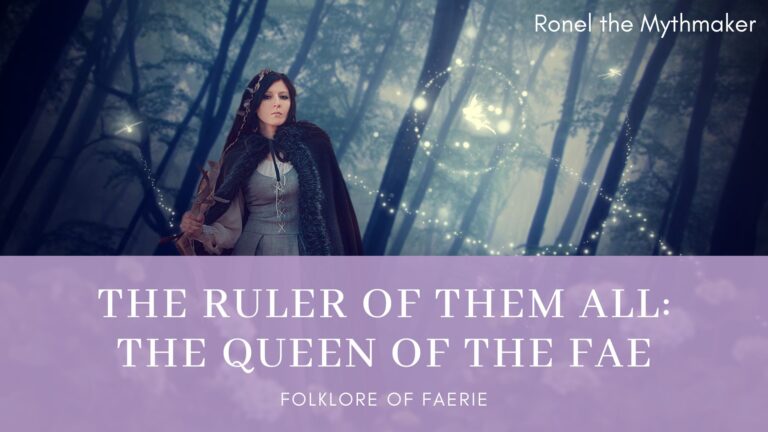
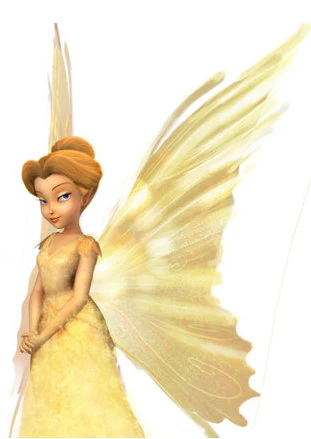
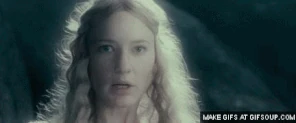

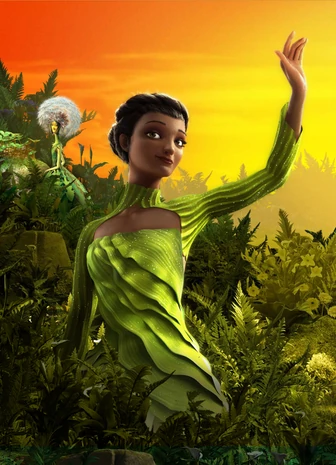

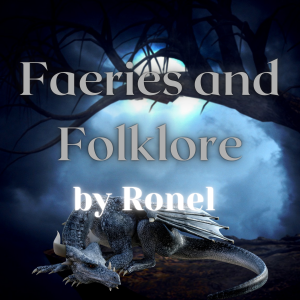

You do make me wish I could be a faery. Sigh. In another life.
I know, right?
Perhaps you were part of the faery realm in another lifetime, Ronel!
I know, right?